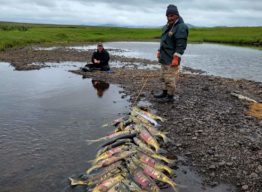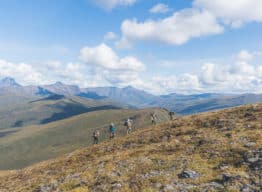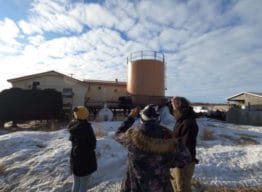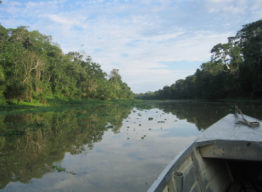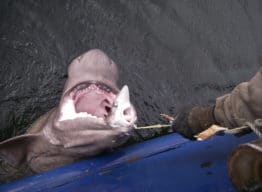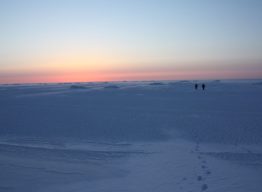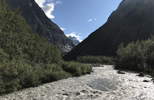Collaborative effort, backed by $2.98 million grant from the NSF, will collaboratively address water and sanitation challenges in Alaska’s Yukon-Kuskokwim Delta ANCHORAGE, Alaska – A new National Science Foundation (NSF)…
Research
APU boreal forest research published in top-tier journal Nature
For the past several years, Dr. Roman Dial has researched tree line in northern Alaska. His undergraduate students may spend 99 days straight in the backcountry, gathering data by foot…
“The value of this connection is unexplainable:” EPH students visit Napaskiak
In March, four environmental public health students from Alaska Pacific University (APU) traveled to the Native Village of Napaskiak in southwest Alaska, a traditional Yup’ik community just up the Kuskokwim…
Artificial Intelligence in the Amazon
New APU-affiliated research shows how artificial intelligence can play a role in sustainable development, specifically in the Amazon. There are at least 158 dams in the Amazon basin, with 351…
Sharks in Alaska: Search Opens for a Postdoctoral Researcher
Improving Catch Estimation of Sharks Using Electronic Monitoring The Fisheries, Aquatic Science, & Technology (FAST) Lab at APU and the NOAA Alaska Fisheries Science Center have teamed up to find…
APU establishes community office for a national Arctic research initiative
As climate change warms the Arctic more than twice as fast as the rest of the planet, new challenges abound for the communities that live in the region, including food…
Alaska Pacific University Eklutna research published in Journal of Hydrology
Three APU researchers from the Institute of Culture and Environment – Associate Professor of Geology Amanda King, Emeritus Professor Jim Brown, and MSES graduate James Meyers – recently published their…
Interactions between Atlantic spotted (Stenella frontalis) and bottlenose (Tursiops truncatus) dolphins off Bimini, The Bahamas 2003 –2007
Interactions between Atlantic spotted (Stenella frontalis) and bottlenose (Tursiops truncatus) dolphins off Bimini, The Bahamas 2003 –2007. Published in Aquatic Mammals, Oct. 1, 2011 Kelly Melillo, MSES, 2007 Interspecific interactions…
Breeding bird density and habitat selection across western Kenai Peninsula wetlands, Alaska
Breeding bird density and habitat selection across western Kenai Peninsula wetlands, Alaska Erika McDonald, MSES, 2008 Distance sampling was used to survey breeding birds on the Kenai Peninsula between May…
CO2 exchange along a hydrologic gradient in the Kenai Lowlands, AK: feedback implications of wetland drying and vegetation succession
CO2 exchange along a hydrologic gradient in the Kenai Lowlands, AK: feedback implications of wetland drying and vegetation succession, Published in Ecohydrology, Dec. 13, 2011 Susan L. Ives, MSES, 2010…
